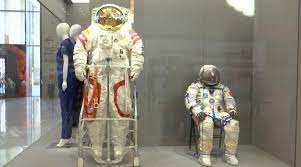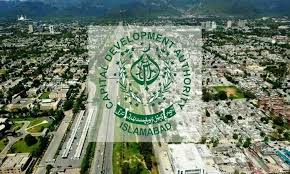Pakistan-China’s friendship shines at space exhibition in Beijing

China Economic Net
Beijing: The commemorative flag of the 70th anniversary of diplomatic relations between China and Pakistan, which was carried into space, was displayed at an exhibition in China.
The ‘Dreaming of the Universe and Asking the Sky: 30 Years of China’s Manned Spaceflight Achievement Exhibition’ was recently held in the West Hall of the National Museum of China, featuring an impressive collection of items that highlight China’s success in space exploration.

Of particular interest is the commemorative flag on display, which celebrates the 70th anniversary of the establishment of diplomatic relations between China and Pakistan.
This flag was carried into space by the Shenzhou-12 spacecraft on June 17, 2021, and spent three months orbiting the earth before returning to the earth. It serves as a reminder of China’s diplomatic ties with Pakistan.
“For Pakistani visitors, seeing the flag being presented here was really meaningful, representing not only the special relationship between Pakistan and China but also reminding people of the long-term cooperation between the two nations in the aerospace industry. It is a fitting tribute to the significant contributions that China has made to Pakistan’s space program over the years,” a Pakistani vlogger, Mahzaib Abbasi, who was shooting a vlog at the exhibition, told China Economic Net.

Since the 1990s, China and Pakistan have had a strong relationship in terms of space collaboration, which began with Chinese assistance in the launch of Pakistan’s first satellite, Badr-1. In 2019, Pakistan and China signed several space exploration agreements at the second BRI Forum, including one paving the way for Pakistan’s first astronaut to go to space. These agreements also established a framework for joint ventures in space and the development of Sino-Pakistani space committees.
In June of last year, Pakistan sent seven sets of medicinal plant species seeds aboard China’s Shenzhou 14 spacecraft to the Tiangong space station, for exposing the seeds to cosmic radiation and microgravity in the hopes of inducing beneficial mutations in their genes.
“Many of my viewers in Pakistan are interested in China’s scientific developments, especially since the ceremony celebrating the return of plant seeds from Tiangong last month,” Mahzaib said.
“I have the opportunity to bring my followers to witness the development of China’s aerospace industry and get up close to various advanced equipment. It is an honour for me. I also hope that my young followers can be inspired and study hard to contribute to Pakistan’s aerospace industry,” he added.
Other notable features showcased at the exhibition included a 1:1 model of the Tianhe core module, a 1:4 model of the space station combination, and scale models of the Long March 2F, Long March 7, and Long March 5B carrier rockets, among others.





